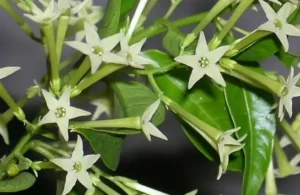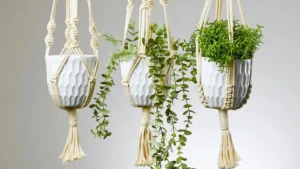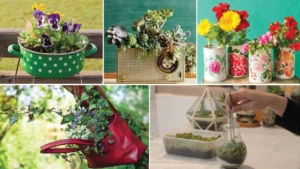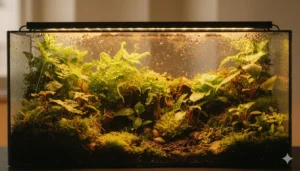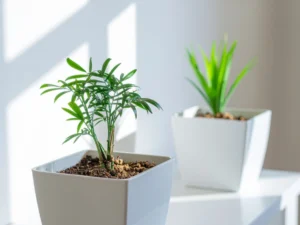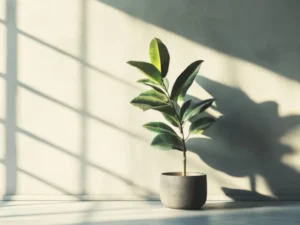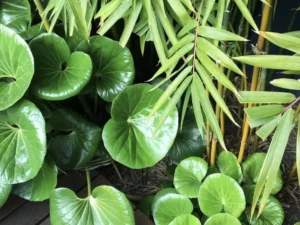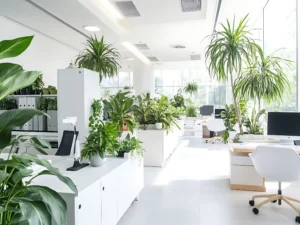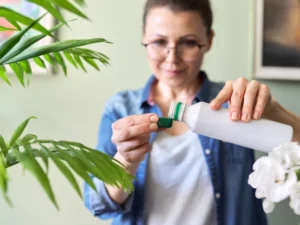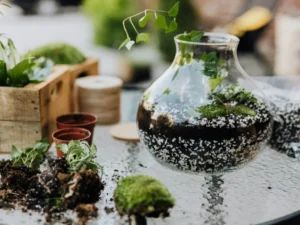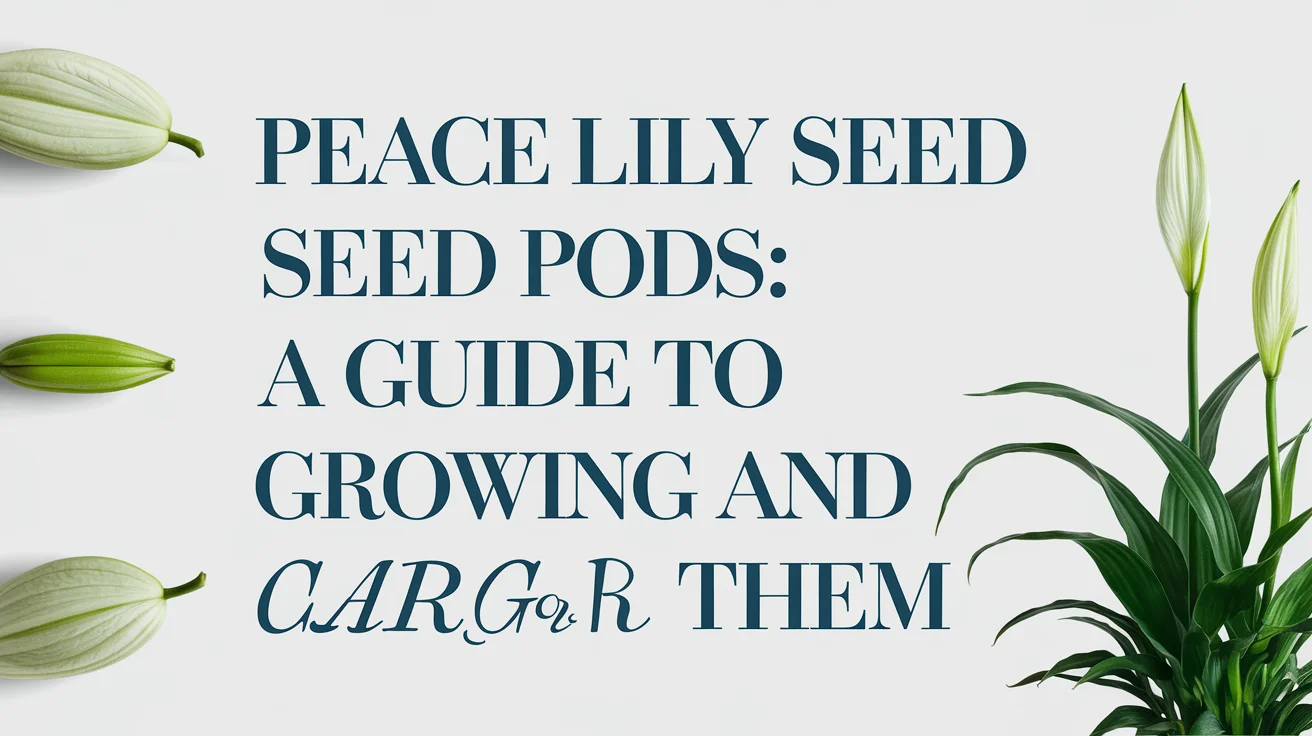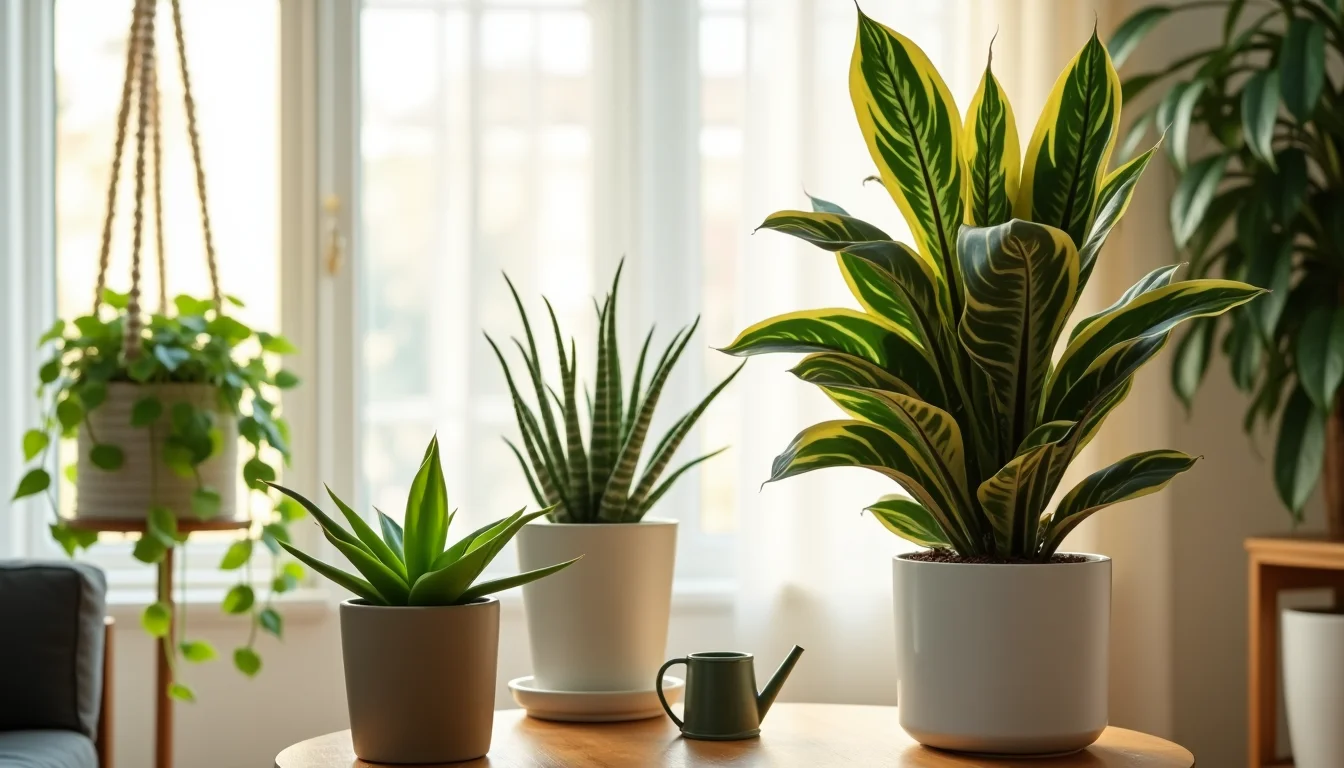Plants can grow with artificial light. The proper setup helps them thrive just as well as natural light. My years of experience growing plants indoors have taught me what works best.
Life on Earth depends on photosynthesis, which gives energy and oxygen to plants, animals, and other organisms. Many people don’t have great natural lighting at home, so artificial light setups are a great solution. Plants mainly absorb blue and red light. Blue light helps them grow, while red light boosts growth and flower production.
Let me guide you through the fascinating world of growing plants under artificial light. As a home gardener, you will learn the science behind plant growth and how to select the best lighting for your space.
This knowledge will empower you to grow winter salad vegetables or start tomatoes early in the season. By understanding the basics, you’ll be able to create perfect conditions for your indoor garden and take full responsibility for its success.
The Science Behind Plant Growth and Light
What is photosynthesis?
Plants grow through a remarkable process called photosynthesis, which turns light energy into chemical energy. Green plants and some organisms use sunlight to turn water, carbon dioxide, and minerals into oxygen and energy-rich organic compounds. This remarkable transformation happens inside chloroplasts, tiny structures that contain chlorophyll, the green pigment that gives plants their color.
The process has two main stages: light-dependent and light-independent reactions (the Calvin cycle). Plants absorb light through chlorophyll molecules in the chloroplasts’ thylakoid membranes.
The chlorophyll picks up blue and red light waves but reflects green ones. The absorbed energy powers electron transfers that create ATP (energy) and NADPH (an electron carrier). The Calvin cycle then uses these compounds to turn carbon dioxide into glucose, which becomes the plant’s food.
Why is light essential for indoor plants
Plants cannot survive without light – it’s their lifeline. They need it to make food through photosynthesis, and without enough light, they use up their energy stores and die. Light shapes everything about how plants develop, from their first sprout to their flowers and fruits.
Your indoor plants will tell you when they need more light. The spaces between their leaves grow longer as they reach for light sources. Their leaves might be pale green or yellow because they can’t make enough chlorophyll. The older leaves often fall off too early, and flowering plants might not bloom. These signs show up because the plant can’t make enough energy without proper light.
How artificial light supports photosynthesis
Artificial lighting works great as a supplement or replacement for natural sunlight indoors. Success comes from providing the right mix of light quality, intensity, and timing. We learned that plants need mostly red and blue wavelengths to photosynthesize. Blue light helps create chlorophyll and controls plant movement, while red light drives photosynthesis and allows plants to flower and fruit.
Today’s grow lights deliver exactly what plants need. For instance, LED lights can produce specific light colors that match what plants use for photosynthesis. These lights also let you control exactly when plants get light, usually 12-14 hours daily for most varieties. Plants can photosynthesize reliably, whatever the weather or season.
Natural sunlight offers the complete spectrum, but good artificial lights let plants photosynthesize effectively. Plants will make their food just like nature, as long as they get enough blue and red light.
Types of Artificial Light for Plants
The proper artificial lighting can make a huge difference when growing plants indoors. Let’s look at the main types you can use and how they help your plants thrive.
Fluorescent lights (T5, CFL)
Indoor gardeners love fluorescent lighting, especially when starting plants and supporting leaf growth. T5 high-output tubes work much better than older T8 and T12 models, producing about 100 lumens per watt.
These lights run cool, so you can close them to your plants without burning them. CFLs are great space-savers because they fit right into standard fixtures. The blue-green light from fluorescents helps leaves grow well, and you can now find full-spectrum options too.
LED grow lights
LEDs have changed the game for indoor growing. They save energy and let you customize the light spectrum your plants receive. The heat output is minimal, but the light packs a punch. These lights last over 50,000 hours, which makes up for their higher price tag.
My experience shows that full-spectrum LEDs support plants beautifully from seedling to flower. Serious growers switch to LEDs because they target red and blue wavelengths without wasting energy on less valuable light spectrums.
High-Intensity Discharge (HID) lights
Commercial growers often rely on HIDs as their go-to choice. You’ll find two main types: Metal Halide (MH) gives off blue light perfect for leafy growth, while High-Pressure Sodium (HPS) produces red/orange light that makes plants flower.
Unlike LEDs, these lights get hot and need good ventilation and space above plants. The intense light penetrates deeply into the canopy, which makes them great for bigger growing operations.
Incandescent and halogen lights
Most plant growers avoid incandescent bulbs. They turn most of the energy into heat instead of useful light, which risks burning plants and wasting electricity. However, these bulbs sometimes give off some red light that might help flowering.
Halogen lights have the same issues – too much heat and not enough of the right kind of light for plants to grow well.
Full-spectrum vs standard bulbs
Full-spectrum lights emit light waves from 380-779nm, mimicking natural sunlight. Research shows that these lights can boost photosynthesis by 20-30% compared to regular lights. This potential makes them an exciting prospect for indoor gardeners, especially for flowering plants, herbs, and young seedlings that need different light wavelengths as they grow.
Flowering plants, herbs, and young seedlings do well under these lights because they need different light wavelengths as they grow.
How to Use Artificial Light Effectively
Setting up good artificial lighting involves more than just installing grow lights. The correct setup details determine whether your indoor plants will struggle or thrive.
Ideal light duration for different plant types
Light duration, or the time plants are exposed to light, is crucial in their development and flowering. Most plants require 12-16 hours of artificial light daily, but providing them with dark periods for proper growth is equally important. Excessive light exposure, whether from synthetic or natural sources, can be detrimental, so it’s best to ensure they don’t receive more than 16 hours of light daily.
Understanding the light needs of different plants is key to successful indoor gardening. For instance, leafy vegetables like lettuce thrive with 10-14 hours of light daily, making them an excellent choice for indoor gardens with limited light exposure.
Succulents and cacti can do well with just 6-8 hours of light, while herbs like basil grow best with 10-16 hours of light, and changes when flowering plants bloom. Short-day plants like Christmas cactus and poinsettias need about 10 hours of artificial light until buds appear.
Correct distance between the light and the plant
Light distance changes based on the type of light and plant growth stage. Seedlings need lights 24-36 inches away to avoid burning. Growing plants do best at 18-24 inches, while flowering plants need lights at 12-18 inches.
Light gets weaker the further it travels. It works like a sprinkler – you get wetter standing closer to it. Sun-loving plants should be closer to the lights than plants that prefer shade.
Understanding light spectrum: red vs blue
Blue light (450-470 nm) helps leaf growth and photosynthesis, while red light (620-660 nm) allows plants to flower and produce fruit.
Research shows lettuce grows best under a mix of red and blue LEDs, with more chlorophyll and faster photosynthesis. The mix matters – studies found the best red/blue ratio for many plants is about 3:1.
Using reflectors and timers
Reflectors help spread light evenly to all plants. Wing reflectors work great for beginners, and parabolic reflectors give excellent coverage in small spaces.
Timers make light schedules automatic and reliable. Advanced models with photocells can also control other equipment, such as exhaust fans.
Signs your plant is getting too much or too little light
Insufficient light causes:
- “Leggy” growth with long stems and significant gaps between leaves
- Pale green or yellow leaves that might fall off
- Smaller new leaves than before
- Plants bend toward light sources
Excessive light causes:
- Burnt leaves that turn yellow at the top
- Green veins with yellow/brown leaves
- Leaves that stick firmly to the plant
Choosing the Right Setup for Your Space
The right lighting solution for your living space must balance your plants’ requirements with practical factors like size and budget.
Best lights for small apartments
Apartment dwellers know space is precious, so compact and multipurpose lighting solutions make perfect sense. Clip-on lights are an excellent choice for tight spaces; they easily attach to bookshelves, desks, or plant stands. The Leoter Grow Light has an adjustable gooseneck design that lets you point the light exactly where your plants need it.
Your walls can work harder with pendant lights that save floor space and light up the room beautifully. The AeroGarden Trio might be just right for your bookshelves or tables, with its three adjustable lamp heads that look great and work even better.
Grow light kits vs DIY setups.
Ready-made grow light kits are convenient, but they’ll cost you more. Specialty gardening brands charge twice as much as a DIY setup. A standard shop light and wire utility shelf setup can nurture hundreds of seedlings in just one corner.
People comfortable with simple tools might benefit from building their own LED setup. These custom systems often work better than store-bought units, giving you more options. Store-bought systems take the guesswork out with tested setups that need minimal assembly.
Budget-friendly options for beginners
New gardeners might want to start with something simple, like the GE LED Grow Light Bulb that works in regular fixtures. These bulbs fit right into your existing lamps, so you can test the waters before buying bigger equipment.
The Spider Farmer SF1000D costs around $90 and uses just 87 watts to produce several ounces of growth in a compact space. LED lights are budget-friendly in the long run because they use less power and last 50,000+ hours compared to fluorescents, which last 20,000 hours.
When to upgrade your lighting system
Your plants will tell you it’s time to upgrade by showing signs they need more light despite good positioning. Modern LEDs work 20-30% better than older models because they use light spectrums more efficiently.
The right time to upgrade comes with an expanding garden or plants growing from seedlings into mature specimens that need stronger light. Look for systems that let you adjust spectrums for different growth stages and include built-in timers to handle the schedule.
Conclusion
Artificial light can grow plants well, even if sunlight is natural. The key is matching light type and duration to the plant’s needs. Some need more blue light to grow, others more red to bloom. Leafy greens thrive with 10–14 hours of light; succulents need only 6–8.
LEDs have changed indoor gardening; they offer more control and less energy. Fluorescent lights are still great for budgets and starting seeds. Your space, goals, and budget should guide the best setup.
Plants show what they need: stretching means too little light; burnt leaves mean too much. With the proper setup, you can grow almost anything indoors, sometimes even better than outside.


